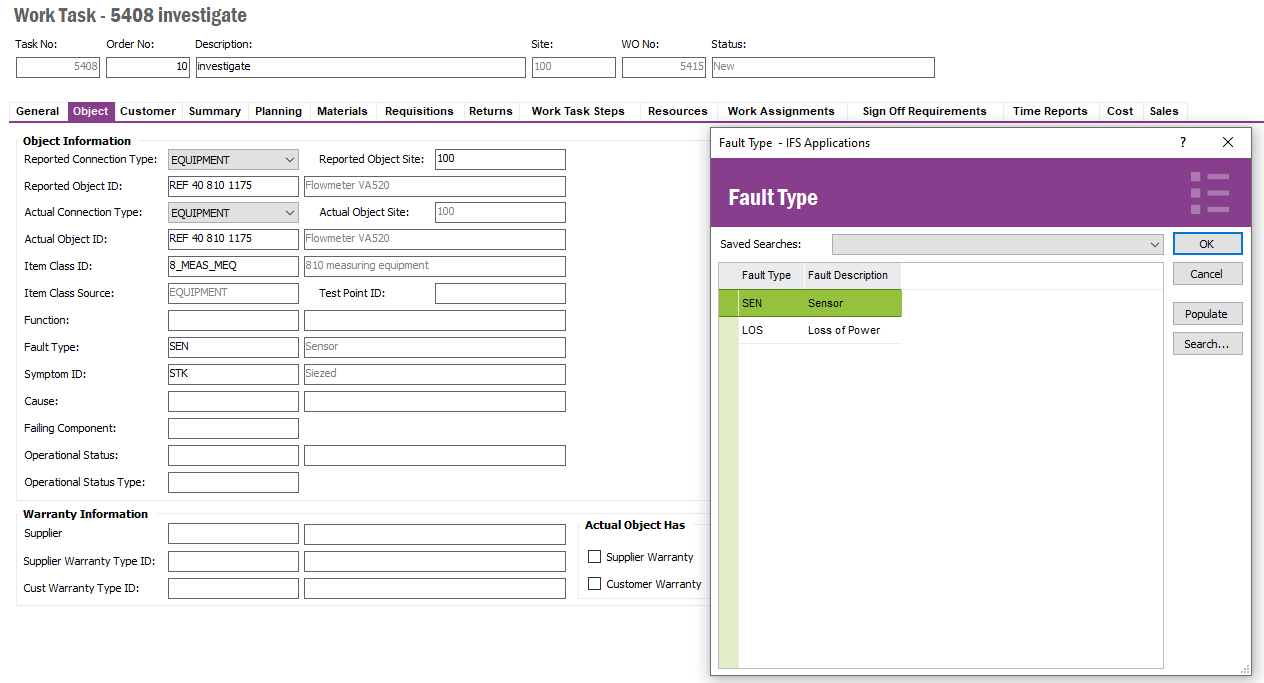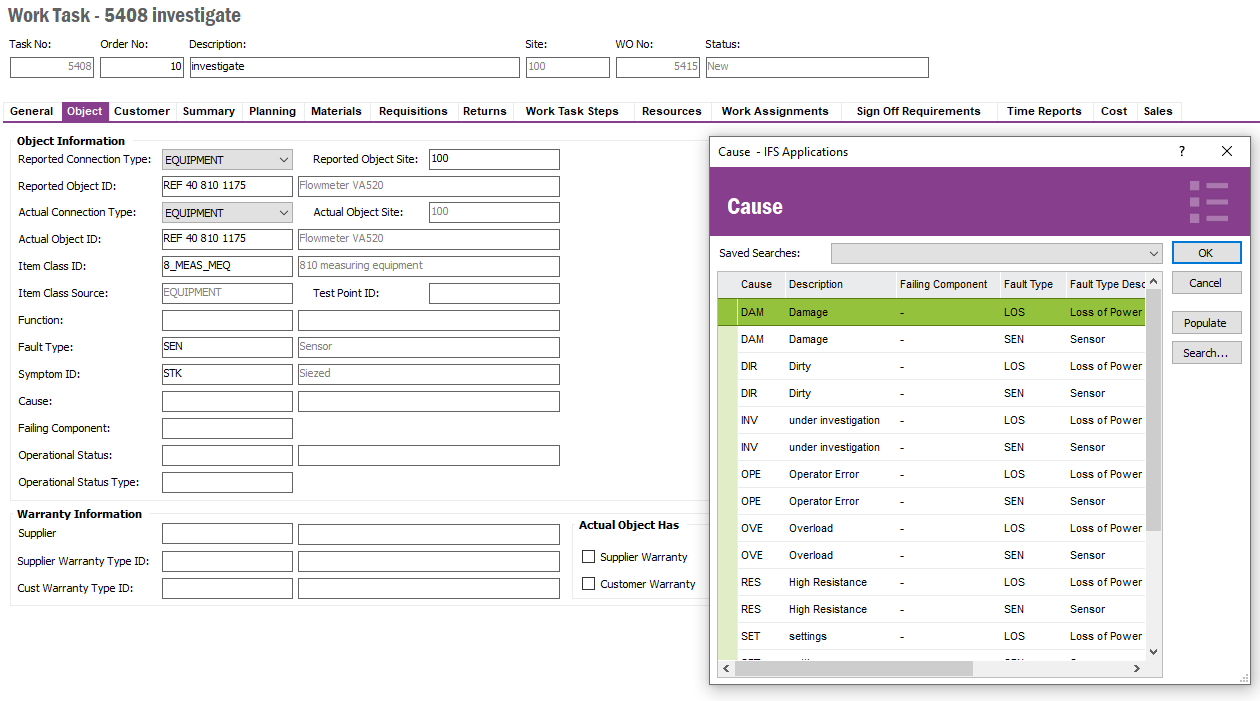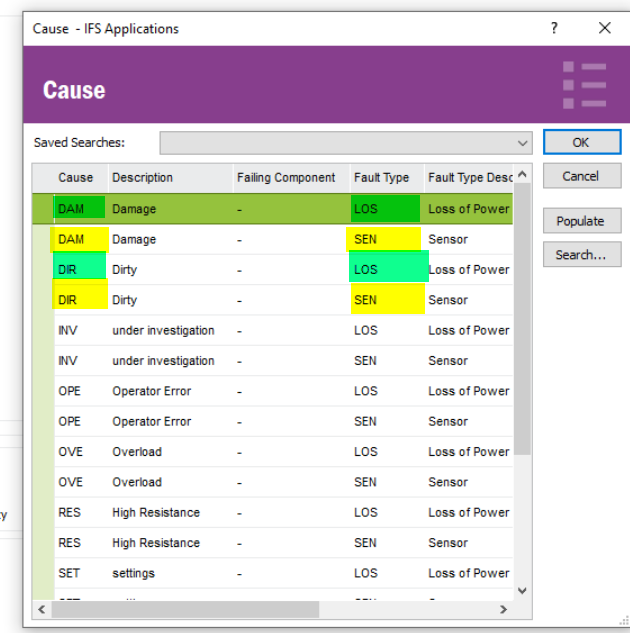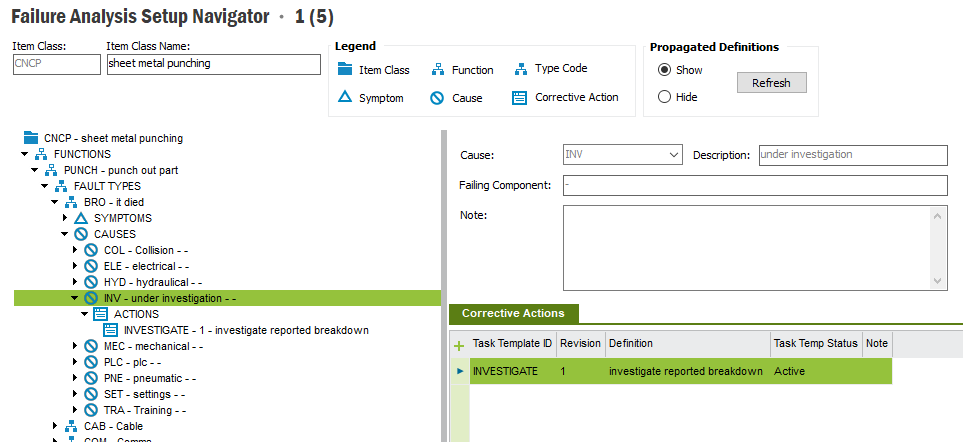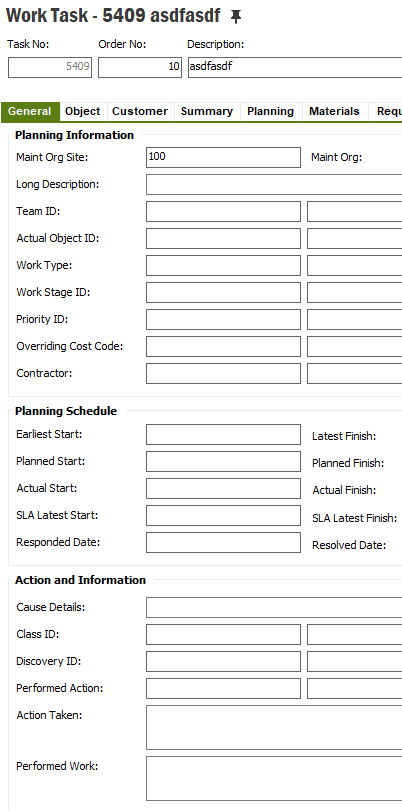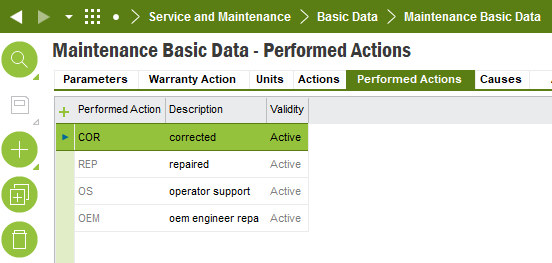Hello,
I am having difficulty understanding the combination of Failure Analysis Setup Navigator i.c.w. Fault Reporting. It was my initial understanding the FASN should we filled so mechanics would have a smarter/ filtered way of reporting causes.
However, what I currently see, is all of the options. This does not seem to directly relate to each other. Could somebody please explain what I am doing wrong?
Below a some screenshots;
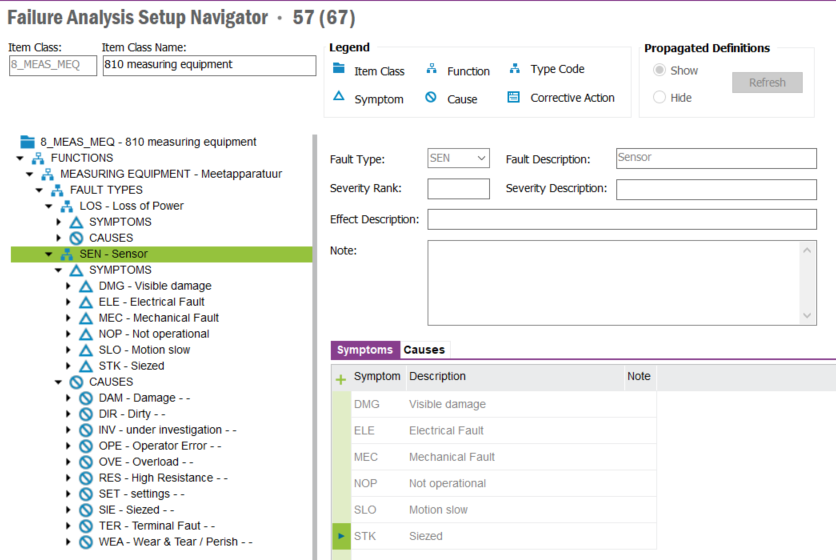
When creating a fault report I see all of the other fault types. While I only defined 2 fault types. The same applies for Causes and Symptoms.
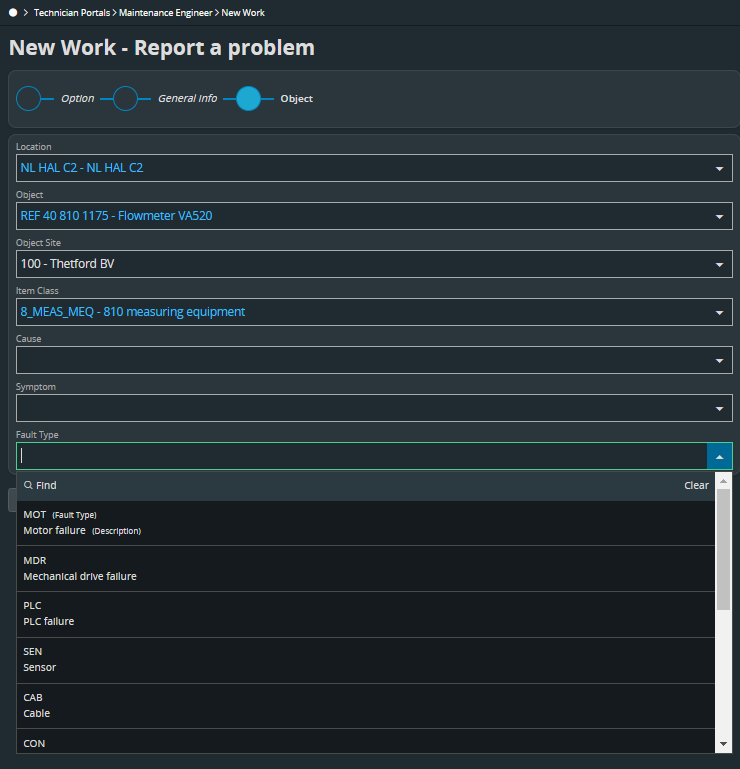
Thanks in advance



